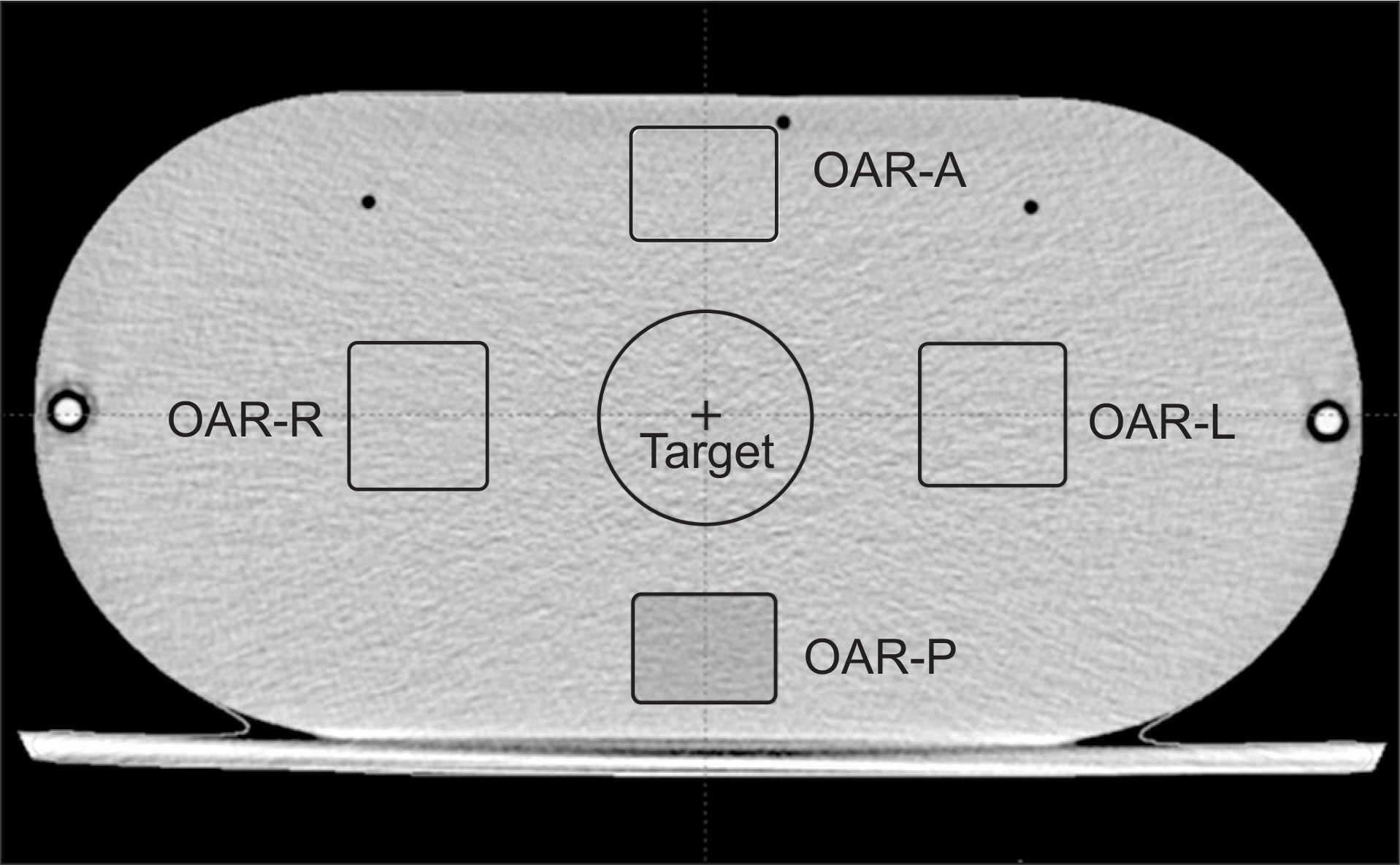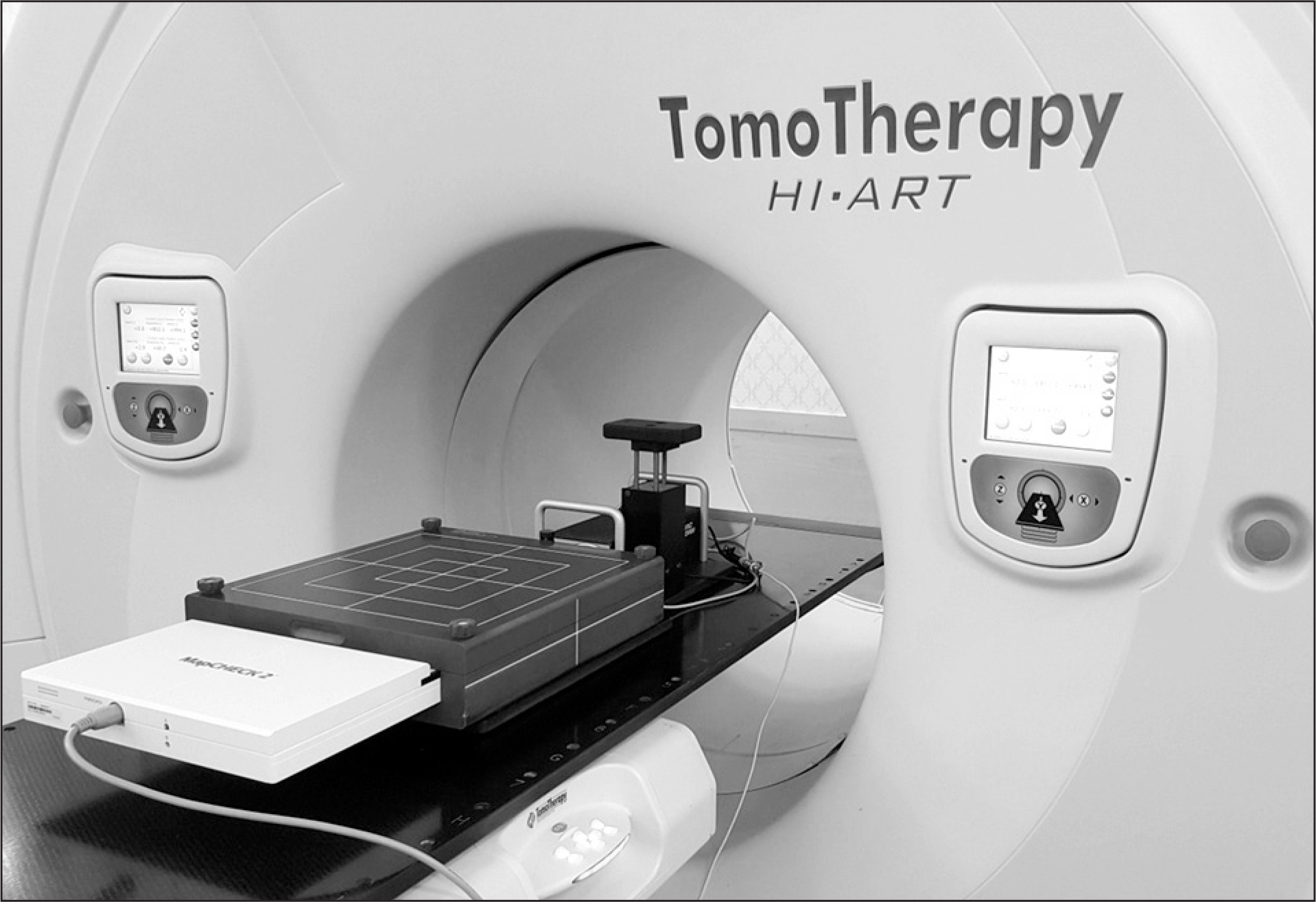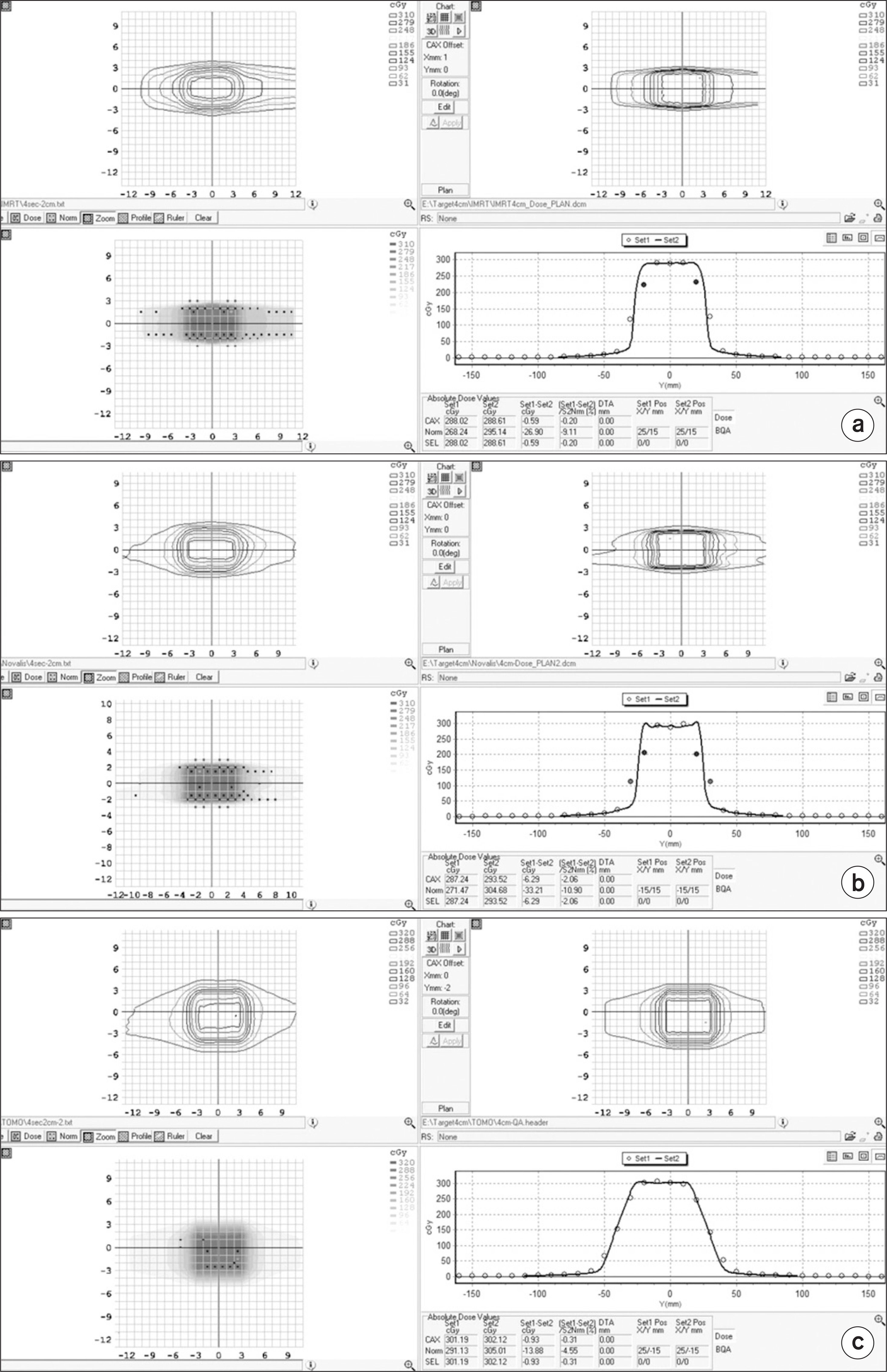Prog Med Phys.
2017 Dec;28(4):164-170. 10.14316/pmp.2017.28.4.164.
Dosimetric Analysis on the Effect of Target Motion in the Delivery of Conventional IMRT, RapidArc and Tomotherapy
- Affiliations
-
- 1Department of Radiation Oncology, Chonnam National University Medical School, Gwangju, Korea. jysong@jnu.ac.kr
- KMID: 2401378
- DOI: http://doi.org/10.14316/pmp.2017.28.4.164
Abstract
- One of the methods to consider the effect of respiratory motion of a tumor target in radiotherapy is to establish a treatment plan with the internal target volume (ITV) created based on an accurate analysis of the target motion displacement. When this method is applied to intensity modulated radiotherapy (IMRT), it is expected to yield a different treatment dose distribution under the motion condition according to the IMRT method. In this study, we prepared ITV-based IMRT plans with conventional IMRT using fixed gantry angle beams, RapidArc using volumetric modulated arc therapy, and tomotherapy using helical therapy. Then, the variation in dose distribution caused by the target motion was analyzed by the dose measurement in the actual motion condition. A delivery quality assurance plan was prepared for the established IMRT plan and the dose distribution in the actual motion condition was measured and analyzed using a two-dimensional diode detector placed on a moving phantom capable of simulating breathing movements. The dose measurement was performed considering only a uniform target shape and motion in the superior-inferior (SI) direction. In this condition, it was confirmed that the error of the dose distribution due to the target motion is minimum in tomotherapy. This is thought to be due to the characteristic of tomotherapy that treats the target sequentially by dividing it into several slices. When the target shape is uniform and the main target motion direction is SI, it is considered that tomotherapy for the ITV-based IMRT method has a characteristic which can reduce the dose difference compared with the plan dose under the target motion condition.
Figure
Reference
-
1.Nicolini G., Vanetti E., Clivio A., Fogliata A., Cozzi L. Preclinical evaluation of respiratory-gated delivery of volumetric modulated arc therapy with RapidArc. Phys Med Biol. 2010. 55:N347–57.
Article2.Viel F., Lee R., Gete E., Duzenli C. Amplitude gated for a coached breathing approach in respiratory gated 10MV flattening filter-free VMAT delivery. J Appl Clin Med Phys. 2015. 16:78–90.3.Eccles C., Brock KK., Bissonnette JP., Hawkins M., Dawson LA. Reproducibility of liver position using active breathing coordinator for liver radiotherapy. Int J Radiat Oncol Biol Phys. 2006. 64:751–9.4.Brock J., McNair HA., Panakis ., N,Symonds-Tayler R., Evans PM., Brada M. The use of the Active Breathing Coordinator throughout radical non-small-cell lung cancer (NSCLC) radiotherapy. Int J Radiat Oncol Biol Phys. 2011. 81:369–75.
Article5.Yakoumakis N., Winey B., Killoran J, et al. Using four-dimensional computed tomography images to optimize the internal target volume when using volume-modulated arc therapy to treat moving targets. J Appl Clin Med Phys. 2012. 13:181–8.
Article6.Yeo SG., Kim ES. Efficient approach for determining four-dimensional computed tomography-based internal target volume in stereotactic radiotherapy of lung cancer. Radiat Oncol J. 2013. 31:247–51.
Article7.Chen H., Wu A., Brandner ED, et al. Dosimetric evaluations of the interplay effect in respiratory-gated intensity-modulated radiation therapy. Med Phys. 2009. 36:893–903.
Article8.Cheong KH., Kang SK., Lee M, et al. Evaluation of delivered monitor unit accuracy of gated step-and-shoot IMRT using a two-dimensional detector array. Med Phys. 2010. 37:1146–51.
Article9.Kang H., Yorke ED., Yang J., Chui CS., Rosenzweig KE., Amols HI. Evaluation of tumor motion effects on dose distribution for hypofractionated intensity-modulated radiotherapy of non-small-cell lung cancer. J Appl Clin Med Phys. 2010. 11:78–89.
Article10.Coleman L., Skourou C. Sensitivity of volumetric modulated arc therapy patient specific QA results to multileaf collimator errors and correlation to dose volume histogram based metrics. Med Phys. 2013. 40:111715.
Article11.Riley C., Yang Y., Li T., Zhang Y., Heron DE., Huq MS. Dosimetric evaluation of the interplay effect in respiratory-gated RapidArc radiation therapy. Med Phys. 2014. 41:011715.
Article12.Chaudhari SR., Goddu SM., Rangaraj D, et al. Dosimetric variances anticipated from breathing-induced tumor motion during tomotherapy treatment delivery. Phys Med Biol. 2009. 54:2541–55.13.Lu W. Real-time motion-adaptive delivery (MAD) using binary MLC: II. Rotational beam (tomotherapy) delivery. Phys Med Biol. 2008. 53:6513–31.
Article14.Lu W., Chen M., Ruchala KJ, et al. Real-time motion-adaptive-optimization (MAO) in TomoTherapy. Phys Med Biol. 2009. 54:4373–98.
Article
- Full Text Links
- Actions
-
Cited
- CITED
-
- Close
- Share
- Similar articles
-
- Evaluation of Dynamic Delivery Quality Assurance Process for Internal Target Volume Based RapidArc
- Evaluation of 3DVH Software for the Patient Dose Analysis in TomoTherapy
- Dosimetric Analysis of Respiratory-Gated RapidArc with Varying Gating Window Times
- Evaluation of Dose Distributions Recalculated with Per-field Measurement Data under the Condition of Respiratory Motion during IMRT for Liver Cancer
- Analysis on the Dosimetric Characteristics of Tangential Breast Intensity Modulated Radiotherapy






